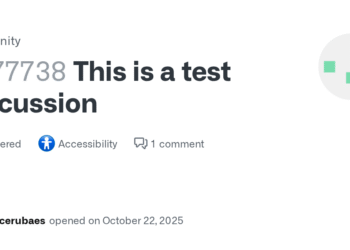Select Language:
OpenAI announced the launch of GPT-5, its latest and highly anticipated AI language model, on Thursday—marking another major step in technology that has significantly impacted global business and culture. This new model, part of the same family that powers ChatGPT, will be accessible to all 700 million ChatGPT users, according to OpenAI.
The industry is now questioning whether OpenAI, which originally sparked the generative AI craze, can sustain its push for major technological breakthroughs that attract large-scale corporate clients, justifying the massive investments being made. The release arrives during a pivotal moment for artificial intelligence. Major players like Alphabet, Meta, Amazon, and Microsoft—partners and backers of OpenAI—are dramatically increasing spending on AI. These companies plan to spend nearly $400 billion this fiscal year on AI data centers, fueling investor optimism for substantial returns.
OpenAI is also exploring options to allow employees to cash out at a valuation nearing half a trillion dollars, a notable increase from its current $300 billion worth. Leading AI researchers are now receiving signing bonuses of up to $100 million.
Economic analyst Noah Smith notes that consumer AI engagement has been strong, driven largely by enthusiasm for ChatGPT, while corporate spending remains comparatively weak. “But consumer AI use alone isn’t enough to justify the trillions being poured into building AI infrastructure,” he said.
The focus for OpenAI is now on GPT-5’s capabilities in enterprise applications. The company highlights the model’s ability to assist in software development, as well as in writing, healthcare inquiries, and financial analysis. OpenAI CEO Sam Altman stated, “GPT-5 is the first of our mainline models that truly feels like you’re talking to an expert — a PhD-level authority on almost anything.”
Altman added, “One of its most exciting features is instant, high-quality software coding. The concept of software on demand is set to define the GPT-5 era.” Early feedback from reviewers suggests the upgrade from GPT-4 to GPT-5 is promising, especially in coding and solving scientific and mathematical problems, although some believe the leap may not be as substantial as previous advancements.
Reflecting on the history, nearly three years ago, ChatGPT introduced the world to generative AI, captivating users with its ability to craft humanlike text and poetry, quickly becoming one of the fastest-growing apps ever. In March 2023, OpenAI released GPT-4, which made significant progress in understanding and intelligence. While GPT-3.5 scored poorly on the bar exam, GPT-4 scored in the top 10%, exemplifying rapid progress from previous versions.
GPT-4’s improvements stemmed from increased computing resources and more extensive training data, based on the theory that scaling up improves model performance. However, challenges arose in expansion efforts. Ilya Sutskever, OpenAI’s former chief scientist, explained that although processing power grew, the available data did not. Since large language models rely on massive datasets scraped from the entire internet, data scarcity became a bottleneck.
Training these models is complex and often prone to hardware failures, and it’s difficult to assess their performance until the full training process concludes, which can take months. To overcome these hurdles, OpenAI has pioneered “test-time compute,” enabling models to allocate extra processing power when tackling particularly difficult questions—allowing for advanced reasoning and decision-making in real time. GPT-5 utilizes this technology, essentially acting as a sophisticated router that can dedicate more resources to complex queries.
This marks the first time the public will have access to OpenAI’s test-time compute, aligning with Altman’s vision of developing AI systems that deliver global benefits. However, he emphasizes that current AI investments are still insufficient, calling for more infrastructure worldwide to make AI accessible in various markets.






